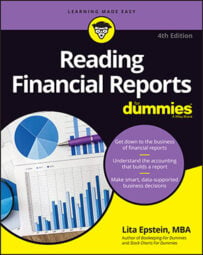The dividend payout ratio looks at the amount of a firm's earnings on financial reports that it pays out to investors. Using this ratio, you can determine the actual cash return you'll get by buying and holding a share of stock.
Some companies pay a portion of their earnings directly to their shareholders using dividends. Growth companies, which reinvest all their profits, rarely pay out dividends, but older, mature companies usually do. Older companies that no longer need to reinvest large sums in growing their businesses pay out the highest dividends.
To determine how well investors did with their stock holding, you can calculate the dividend payout ratio.
Dividend payout
To find the dividend payout ratio, divide yearly dividend per share (the total amount per share paid out to investors during the year in dividends) by earnings per share:
Yearly dividend per share ÷ Earnings per share = Dividend payout ratio
You can use numbers from Mattel's 2012 income statement to practice calculating the dividend payout ratio:
$1.24 (Dividends per share) ÷ $2.22 (Diluted EPS) = 55.86% (Dividend payout ratio)
Mattel paid out 55.86 percent of its diluted earnings per share to investors in 2012. If you subtract this percentage from 100 percent, you can find how much the company plowed back into its operations toward future growth. In Mattel's case, it reinvested 44.1 percent of its earnings in the growth of the company.
You can find the earnings reinvested in the company over the years in the retained earnings line in the shareholders’ equity section of the balance sheet. Each year, any additional retained earnings are added to this line item. Mattel's retained earnings were more than $3,5 billion during its lifespan, according to the 2012 balance sheet.
Following are numbers from Hasbro's 2007 income statement. You can use them to calculate the dividend payout ratio.
$1.44 (Dividends per share) ÷ $2.55 (Diluted EPS) = 56.5% (Dividend payout ratio)
Hasbro paid out 56.5 percent of its diluted earnings per share to investors and plowed 43.5 percent (subtract 56.5 from 100) back into the company to use for future growth. Hasbro's retained earnings on its 2012 balance sheet were more than $3.3 billion.
Dig into companies’ profits with dividends
Should the dividend payout ratio make a difference to you? In the past, investors expected dividend payouts. Dividends made up as much as 40 percent of most investors’ portfolio returns about 20 years ago. But investors’ priorities have changed in the past 20 years. Today investors look toward capital gains, which are the profits investors make when selling a share of stock for more than they paid for that stock.
The big question is what better serves the investor and the company: immediate cash payouts of dividends or long-term growth resulting from reinvesting profits each year? The answer to this question isn't an easy one. Younger companies rarely pay dividends because they need the money for growth, but as companies mature, the correct answer is more difficult to determine.
Microsoft held billions in cash and refused to pay dividends for years, claiming that it may need cash for growth. Not until investors screamed loudly did Microsoft finally pay its first dividend in 2003: only 8¢ per share, or a total of about $857 million! In 2012, Microsoft paid 92 cents per share in dividends. Microsoft held $73.79 billion in cash and short-term investments at the end of June 2012.
Definitely check how the dividend payout ratio compares with that of similar companies. If the dividend payout ratio is considerably smaller than that of other similar companies, be sure you understand what the company does with the money and whether it's making good use of the funds it's reinvesting.
If the company pays out a significantly larger portion of earnings to investors than most other companies in the industry, it may not have any good ideas for growth and is therefore just milking the cash cow, which may eventually run dry.
High dividend payout ratios may be a sign that a decrease in profits is on the way. If a company continually increases its dividend payout ratio even as profits fall, you've encountered a warning sign that future trouble is brewing.
If the dividend payout ratio looks extremely high or low, look at the financial statements before you get too concerned. Did some extraordinary event, such as a significant loss from a plant closing or the sale or purchase of a subsidiary, dramatically impact net income? A one-time event that impacts net income can explain an unusually high or low dividend payout ratio and needn't raise a red flag for investors.

